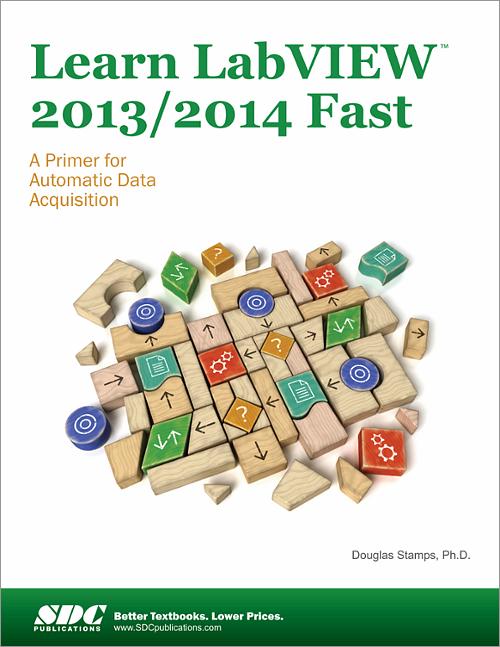Learn LabVIEW 2013 / 2014 Fast
A Primer for Automatic Data Acquisition
- Description
- Contents
- Details
Description
Key Features
- Developed to help new users learn LabVIEW fast
- Uses hands-on, practical problems to make learning easier
- Covers all areas of data acquisition with easy to use, step-by-step guides using LabVIEW Express VIs
- A modular structure allows you to focus only on the areas that interest you
- Comes with a free copy of LabVIEW Student Edition Software
In Detail
Learn LabVIEW 2013 / 2014 Fast is written for users that have no experience with LabVIEW and only a limited understanding of automatic data acquisition. This primer will help you quickly become proficient using LabVIEW and confident in your ability to create applications in a wide variety of data acquisition topics.
The goal of this primer is to introduce you to LabVIEW for hands-on use in automatic data acquisition and controls applications. This primer uses a number of practical real-life examples to provide both breadth and depth to the topic. The real-life examples used in this book demonstrate the value of LabVIEW, provide motivation for learning LabVIEW and make the examples fun to program.
The first chapter of this book is designed to introduce you to the general concepts of LabVIEW through the development of a general program that acquires analog input data. The rest of the book introduces you to general concepts of data measurement and generation using LabVIEW’s DAQ Assistants, Express VIs and the configuration approach for automatic data acquisition.
This primer has a unique modular structure that does not require the chapters to be completed in succession. After you complete the first chapter you are free to complete whichever sections you would like, in the order you would like to complete them, allowing you to focus on the topics that are of most interest to you.
Each section in the primer introduces you to a new data acquisition topic. After an introduction to the topic, a program is developed within this topic using step by step instructions. Each chapter concludes with several additional practical application problems, where the data acquisition program is given, but the detailed steps to create the program are left to you.
Example problems are provided for all modes of data acquisition, including analog input and output, digital input and output, and counters. For example, the problems show many aspects of analog input, such as hardware and software timing, buffered and triggered acquisition, and examples with common sensors, such as thermocouples and strain gages. Examples from other acquisition modes show how to drive many common output devices, such as stepper motors, servo motors, and DC motors, as well as software control programs, such as the PID compensator and pulse width modulation.
Who this book for
The book is suitable for professionals getting started in data acquisition and for courses involving instrumentation and measurements, experimental methods, and electrical project labs.
Table of Contents
- LabVIEW for Data Acquisition
- Analog Signal Measurement and Generation
- Digital Signal Measurement and Generation
- Counters
Index
Product Details
| Publisher | SDC Publications |
| Authors | Douglas Stamps Ph.D. |
| Published | January 15, 2015 |
| User Level | Beginner |
| Pages | 320 |
| Binding | Paperback |
| Printing | Black and White |
| Print ISBN | 978-1-58503-944-9 |
| Print ISBN 10 | 1585039446 |
| eBook ISBN | 978-1-63056-229-8 |
